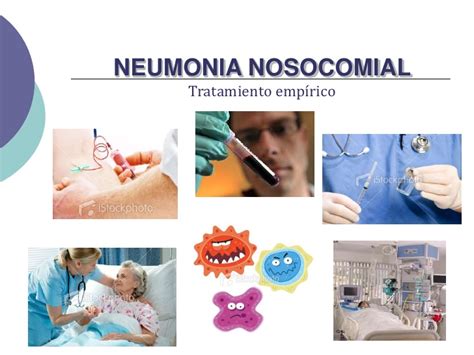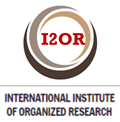Predictores de Neumonía Nosocomial Precoz en pacientes con Hemorragia Intracerebral Espontánea

Resumen
Introducción: la hemorragia intracerebral espontánea es la más mortal, incapacitante y menos tratable de los ictus, entre las complicaciones agudas la neumonía nosocomial representa el segundo evento más importante y contribuye enormemente tanto a desenlaces negativos como a elevados costos.
Objetivo: identificar las variables independientes que logran estimar el pronóstico de neumonía nosocomial precoz.
Métodos: estudio de cohorte constituida por pacientes con diagnóstico de hemorragia intracerebral espontánea aguda admitidos de modo consecutivo en la sala de terapia intermedia del Hospital Provincial General Universitario “Carlos Manuel de Céspedes” de Bayamo, desde el 1º de agosto del año 2008 hasta el 31 de agosto del año 2012.
Resultados: un total de177 pacientes fueron incluidos durante el período de estudio. El 36,2% de los pacientes presentaron neumonía nosocomial precoz. Se identificaron los siguientes factores independientes: escala de Glasgow ≤ 10 puntos (OR: 9,591; IC 95% 3,898- 23,597), escala de Rankin ≥ 4 (OR: 8,545; IC 95% 2,621-27,862), la disfagia (OR: 3,726; IC 95% 1,321- 10,511), la presencia de afasia motora/disartria (OR: 3,723; IC 95% 1,526- 9,083) y los vómitos al debut del ictus (OR: 2,692; IC 95% 1,090- 6,649) mostraron una relación independiente con la probabilidad de adquirir neumonía nosocomial precoz.
Conclusiones: la neumonía nosocomial en pacientes con hemorragia intracerebral puede ser adecuadamente pronosticada con un pequeño grupo de factores pronósticos
Referencias
Tapia-Pérez H, González-Aguirre D, Sánchez-Aguilar M, Torres-Corzo J, Rodríguez-Leyva, Gordillo-Moscoso A. Evaluación de cambios en el tratamiento de la hemorragia intracerebral espontánea en un hospital regional mexicano. Rev Neurol [Internet]. 2010 [citado 25 de mayo de2015]; 50: 201-6. Disponible en: http://www.revneurol.com/sec/resumen.php?id=2009373
Rodriguez Luna D, Rubiera M, Ribo M, Coscojuela P, Pagola J, Pinñeiro S, et al. Serum Low-Density Lipoprotein Cholesterol Level Predicts Hematoma Growth and Clinical Outcome After Acute Intracerebral Hemorrhage. Stroke [Internet].2011 [citado25 de mayo de2015]; 42(9):2447-52. Disponible en: http://stroke.ahajournals.org/content/42/9/2447.full
Rodriguez Luna D, Rubiera M, Ribo M, Coscojuela P, Piñeiro S, Pagola J, et al. Ultraearly hematoma growth predicts por outcome after acute intracerebral hemorrhage. Neurology [Internet]. 2011 [citado 25 de mayo de 2015]; 77:1599–1604. Disponible en: http://www.ncbi.nlm.nih.gov/pubmed/21998314
Hwang BY, Appelboom G, Kellner C, Carpenter AM, Kellner MA. Clinical Grading Scales in Intracerebral Hemorrhage. Neurocrit Care [Internet]. 2010 [citado 25 de mayo de 2015]; 13:141–51. Disponible en: http://www.ncbi.nlm.nih.gov/pubmed/20490715
Ali M, Lyden P, Sacco L, Shuaib A, Lees R. Natural history of complications after intracerebralhaemorrhage. Eur J Neurol [Internet]. 2009 [citado 25 de mayo de2015]; 16: 624–30. Disponible en: http://www.ncbi.nlm.nih.gov/pubmed/19236462
Emsley HC, Hopkins SJ. Acute ischaemic stroke and infection: recent and emerging concepts. Lancet Neurol [Internet]. 2008 [citado 25 de mayo de 2015]; 7(4):341–53. Disponible en: http://www.ncbi.nlm.nih.gov/pubmed/18339349
Hug A, Dalpke A, Wieczorek N, Giese T, Lorenz A, Auffarth G, et al. Infarct volume is a major determiner of post-stroke immune cell function and susceptibility to infection. Stroke. 2013; 40: 3226–32.
Vermeij FH, Scholte op Reimer WJ, de Man P, van Oostenbrugge RJ, Franke CL, de Jong G, de Kort PL, Dippel DW. Strokeassociated infection is an independent risk factor for poor outcome after acute ischemic stroke: data from the Netherlands stroke survey. Cerebrovasc Dis 2011; 27: 465–71.
European Stroke Organisation (ESO) Executive Committee; ESO Writing Committee. Guidelines for management of ischaemic stroke and transient ischaemic attack 2008. Cerebrovasc Dis. 2012; 25: 457–507.
Prass K, Meisel C, Hoflich C. Stroke-induced immunodeficiency promotes spontaneous bacterial infections and is mediated by sympathetic activation reversal by poststroke T helper cell type 1-like immunostimulation. J Exp Med 2013; 198: 725–36.
Guidelines for the management of adults with hospital-acquired, ventilador-associated, and healthcare-associated pneumonia. Am J Respir Crit Care Med 2010; 171:388-416.
Mazumdar M, Glassman JR. Categorizing a prognostic variable: Review of Methods, code for easy implementation and applications to decision making about cancer treatments. Statist Med 2011; 19: 113-32.
Domínguez Perera MA. Neumonía nosocomial. En: Caballero López A. Terapia Intensiva. 2da. ed. La Habana: Editorial Ciencias Médicas; 2009. p. 1381–99.
Katzan IL, Cebul RD, Husak SH, Dawson NV, Baker DW. The effect of pneumonia on mortality among patients hospitalized for acute stroke. Neurology 2010; 60: 620–25.
Katzan IL, Dawson NV, Thomas CL, Votruba ME, Cebul RD. The cost of pneumonia after acute stroke. Neurology 2013; 68: 1938–43.
Finlayson O, Kapral M, Hall R, Asllani E, Selchen D, Saposnik G, et al. Risk factors, inpatient care, and outcomes of pneumonia after ischemic stroke. Neurology 2011; 77: 1338–45.
Naidech AM, Bendok BR, Tamul P, Bassin SL, Watts CM, Batjer HH, et al. Medical Complications Drive Length of Stay After Brain Hemorrhage: A Cohort Study. Neurocrit Care 2009; 10: 11–19.
Jones EM, Albright KC, Fossati-Bellani M, Siegler JE, Martin-Schild S. Emergency Department Shift Change Is Associated With Pneumonia in Patients With Acute Ischemic Stroke. Stroke 2011; 42: 3226-30.
Ohwaki K, Yano E, Nagashima H, Nakagomi T, Tamura A. Impact of Infection on Length of Intensive Care Unit Stay after Intracerebral Hemorrhage. Neurocrit Care 2013; 8: 271–75.
Lakshminarayan K, Tsai AW, Tong X, Vazquez G, Peacock JM, George MG, et al. Utility of Dysphagia Screening Results in Predicting Poststroke Pneumonia. Stroke 2012; 41: 2849-54.
Craig LE, Bernhardt J, Langhorne P, Wu O. Early Mobilization After Stroke. Stroke 2010; 41: 2632-36.
Quinn TJ, Dawson J, Walters MR, Lees KR. Reliability of the Modified Rankin Scale: A Systematic Review. Stroke 2014; 40: 3393-95.
Hilker R, Poetter C, Findeisen N, Sobesky J, Jacobs A, Neveling M et-al. Nosocomial Pneumonia After Acute Stroke. Implications for Neurological Intensive Care Medicine. Stroke 2012; 34: 975-81.
Hinchey JA, Shephard T, Furie K, Smith D, Wang D, Tonn S , et al. Formal Dysphagia Screening Protocols Prevent Pneumonia. Stroke 2013; 36: 1972-76.
Almirall J, Cabré M, Clavé P. Neumonía aspirativa. Med Clin 2008; 129:424-32.
Benaim C, Cailly B, Perennou D, Pelissier J. Validation of the Aphasic Depression Rating Scale. Stroke 2008; 35: 1692-96.
Hilari K, Byng S, Lamping DL, Smith SC. Stroke and Aphasia Quality of Life Scale-39 (SAQOL-39). Stroke 2010; 34: 1944-50.
Sellars C, Bowie L, Bagg J, Sweeney P, Miller H, Tilston J, et-al. Risk Factors for Chest Infection in Acute Stroke. Stroke 2007; 38: 2284-91.
Ángeles Garay U, Gayosso Rivera JA, Díaz Ramos RD, Velázquez Chávez Y, Marcial Zamorán C, Zambrana Aramayo MR, et al. Factores de riesgo específicos en cada tipo de infección nosocomial. Enfinfmicrobiol 2011; 30: 91-99.
Maramattom BV, Weigand S, Reinalda M, Wijdicks EF, Manno EM. Pulmonary Complications After Intracerebral Hemorrhage. Neurocrit Care 2012; 05: 115–19.
Enlaces refback
- No hay ningún enlace refback.
Copyright (c) 2018 MULTIMED Granma

Esta obra está bajo una licencia de Creative Commons Reconocimiento-NoComercial-CompartirIgual 4.0 Internacional.










